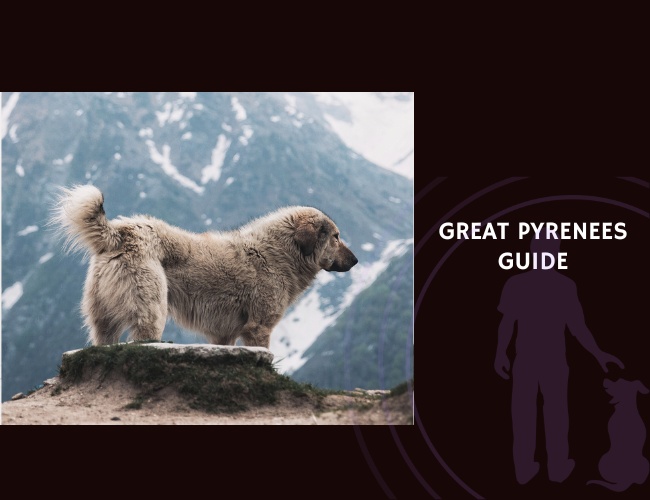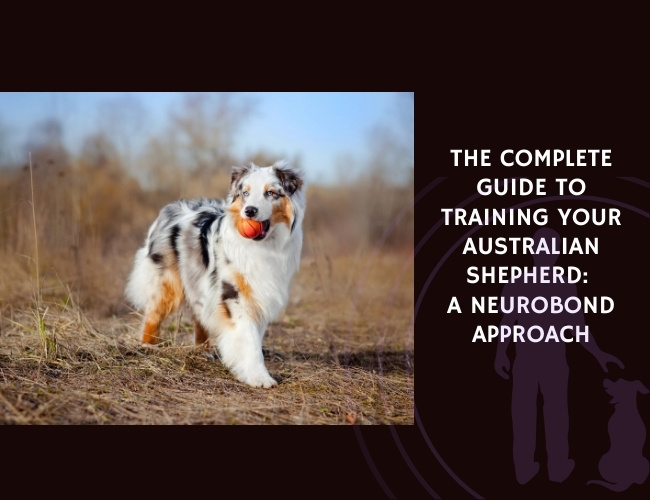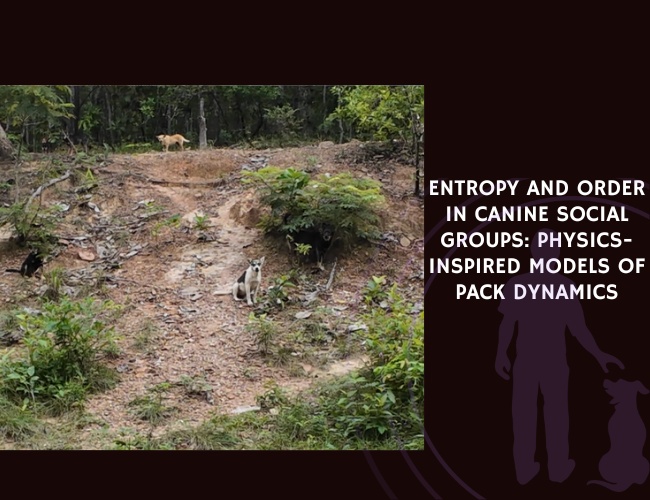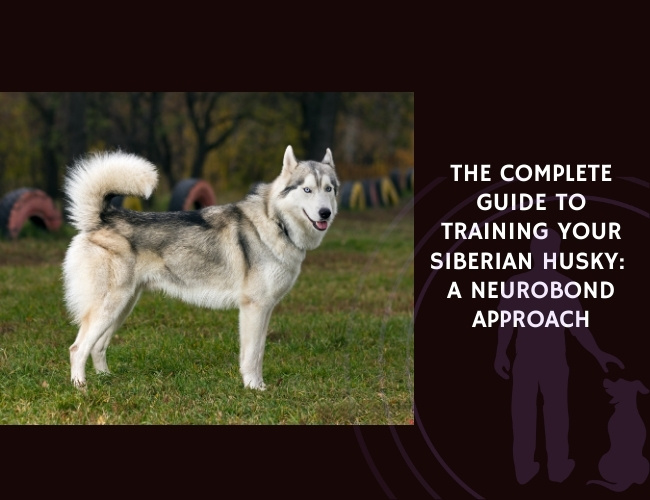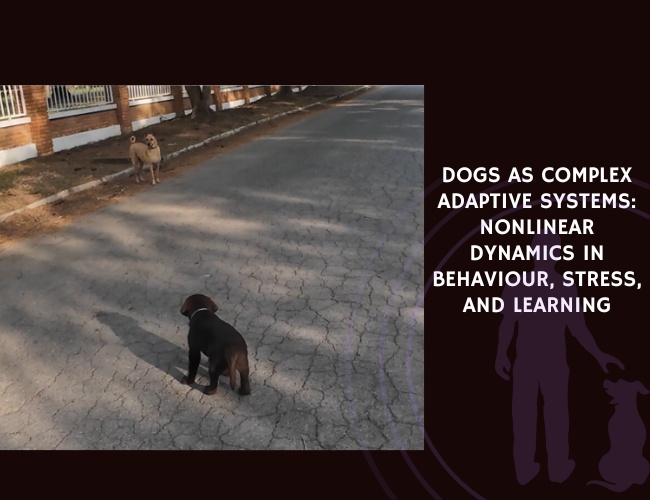Picture a majestic white guardian standing watch over mountain meadows, their thick coat rippling in the alpine breeze. For centuries, the Great Pyrenees has served as both protector and companion, earning their place as one of history’s most devoted livestock guardians. Today, these gentle giants bring that same protective instinct into our homes, offering a unique blend of independence and loyalty that captivates dog lovers worldwide.
Did you know that Great Pyrenees can sense changes in barometric pressure, often alerting to storms hours before they arrive? This remarkable sensitivity is just one of many traits that make this breed so fascinating. Let us guide you through understanding these magnificent dogs, from their ancient heritage to their modern role as beloved family members.
Character & Behavior
The Heart of a Guardian
Understanding your Great Pyrenees begins with recognizing their fundamental nature as independent thinkers and devoted protectors. Unlike breeds developed for close handler cooperation, these dogs were bred to make autonomous decisions while guarding flocks in remote mountain regions. This heritage shapes every aspect of their personality today.
The Guardian’s Mindset: More Than Just Protection
Your Great Pyrenees doesn’t just guard—they actively assess, monitor, and manage their environment. This proactive approach means they’ll often position themselves strategically in your home, choosing vantage points that allow them to observe all entrances. You might notice your furry friend moving between different “posts” throughout the day, maintaining their self-appointed security rounds.
Key guardian behaviors include:
- Perimeter patrolling, especially during dawn and dusk hours
- Alert barking at perceived anomalies (yes, that includes leaves blowing differently)
- Positioning themselves between family members and strangers
- Creating mental maps of “safe” versus “uncertain” territories
This vigilance extends beyond physical threats. Great Pyrenees demonstrate remarkable emotional intelligence, often sensing family stress before you’re consciously aware of it. They may lean against you during difficult moments or position themselves nearby when you’re feeling vulnerable—a behavior rooted in their protective instincts. 🧡
Independence Meets Devotion: A Unique Bond
The Great Pyrenees’ attachment style differs significantly from velcro breeds like Golden Retrievers. While they form deep bonds with their families, they express love through presence rather than constant physical contact. Think of them as the introverted friend who shows care by simply being there when needed.
This independence manifests in several ways:
- Selective affection timing: They choose when to seek cuddles, often surprising you with sudden displays of affection
- Space appreciation: They value having their own quiet spots while maintaining awareness of family activities
- Decision-making autonomy: They may pause to consider commands, evaluating whether compliance serves the greater good
Understanding this balance helps prevent misinterpreting their behavior as aloofness. Your Pyrenees loves deeply—they just express it through steadfast presence rather than exuberant displays.
Nocturnal Nature: When Night Shifts Begin
As darkness falls, your seemingly lazy daytime companion transforms into a vigilant sentinel. This nocturnal activity pattern, hardwired through generations of nighttime predator defense, means your Pyrenees experiences peak alertness when you’re ready for bed.
Managing nocturnal behaviors requires understanding their roots:
- Night barking serves as both deterrent and communication
- Increased activity levels reflect ancestral working patterns
- Heightened sensitivity to sounds and movements after dark
- Patrol behaviors intensify during full moons and weather changes
Rather than fighting these instincts, successful owners work with them, providing appropriate outlets and establishing nighttime routines that honor their dog’s natural rhythms while maintaining household peace.
Vocalization & Communication
Understanding How Your Pyrenees “Talks”
The Great Pyrenees possesses one of the most nuanced vocal repertoires in the canine world. Far from simple barking, their vocalizations form a complex language that, once understood, reveals the depth of their communication abilities.
The Bark Spectrum: From Whispers to Roars
Your Pyrenees doesn’t just bark—they orchestrate a symphony of sounds, each with specific meaning and purpose. Learning to interpret these vocalizations transforms potential frustration into meaningful dialogue.
The vocalization hierarchy includes:
- Warning woofs: Low, single barks indicating mild concern
- Alert barking: Rhythmic, medium-volume barks signaling attention needed
- Threat deterrence: Deep, booming barks meant to intimidate potential dangers
- Contentment grumbles: Soft, rumbling sounds during relaxation
- Excitement yips: Higher-pitched vocalizations during play or greetings
Each vocalization carries contextual meaning. A 2 AM bark at the back door differs significantly from a 2 AM bark at the front window. The former might indicate bathroom needs; the latter suggests perceived intrusion.
Body Language: The Silent Conversation
While their barks command attention, Great Pyrenees communicate volumes through subtle body language. Their expressive faces and deliberate movements create a rich non-verbal vocabulary.
Key body language signals:
- The Pyr paw: Placing a massive paw on you indicates affection and connection
- Lean-in protection: Positioning their body against yours during uncertainty
- Tail positions: Low, relaxed wags show contentment; high, stiff tails indicate alertness
- Eye contact patterns: Direct gazes seek communication; averted eyes show respect
- Ear positioning: Forward ears indicate interest; back ears suggest uncertainty
Understanding these signals helps you respond appropriately to your dog’s needs and emotional states, strengthening your bond through improved communication.
Stress Signals and Emotional Expression
Great Pyrenees, despite their stoic appearance, experience and express a full range of emotions. Recognizing stress signals early prevents escalation and supports emotional well-being.
Watch for these subtle stress indicators:
- Excessive panting without physical exertion
- Lip licking or yawning in non-tired contexts
- Pacing or inability to settle in familiar environments
- Changes in vocalization patterns or frequency
- Seeking unusual hiding spots or increased clinginess
Your Pyrenees may also mirror household stress, becoming more vigilant during family tensions or changes in routine. This emotional sensitivity, while requiring awareness, also makes them exceptional therapy and emotional support animals when properly trained. 🐾

Training & Education
Working With Independent Thinkers
Training a Great Pyrenees requires abandoning traditional obedience paradigms in favor of partnership-based approaches. These dogs weren’t bred to follow commands blindly—they were bred to think, evaluate, and act in the best interest of their charges.
Motivation Matters: Finding Your Pyrenees’ Currency
Unlike breeds that live to please, Great Pyrenees require compelling reasons to comply with requests. This isn’t stubbornness—it’s intelligence applied through an independent filter. Successful training identifies what motivates your individual dog.
Effective motivators often include:
- Relationship rewards: Praise and affection from trusted humans
- Environmental access: Opportunities to patrol or explore
- Problem-solving challenges: Tasks that engage their intelligence
- High-value treats: Used sparingly for critical behaviors
- Social engagement: Controlled interactions with favored people or animals
The key lies in making compliance more rewarding than independence. This might mean trading a recall for the chance to investigate an interesting scent, then rewarding the return enthusiastically.
The Power of Choice: Autonomy in Training
Incorporating choice into training sessions dramatically improves Pyrenees engagement. Rather than demanding immediate compliance, offer options that lead to desired outcomes while respecting their autonomous nature.
Choice-based training strategies:
- Present two acceptable options: “Would you like to sit or down for your dinner?”
- Use environmental management to make correct choices easy
- Build behavior chains that feel like the dog’s idea
- Reward offered behaviors enthusiastically
- Avoid confrontational training methods that trigger opposition
This approach builds willing partnership rather than reluctant compliance, creating a dog who chooses to work with you rather than despite you.
Early Socialization: The Foundation of Confidence
The critical socialization window (3-14 weeks) holds particular importance for Great Pyrenees. Their natural wariness of strangers, while valuable for guardian work, requires careful calibration for modern life.
Comprehensive socialization should include:
- Positive exposure to diverse people (ages, appearances, movements)
- Controlled meetings with various animals
- Environmental experiences (urban sounds, rural settings, weather)
- Handling exercises preparing for grooming and veterinary care
- Confidence-building exercises on different surfaces and obstacles
Remember that socialization isn’t just exposure—it’s positive association. Each new experience should build confidence rather than overwhelm, creating a dog who can accurately assess genuine threats versus normal life variations.
Distance Work: Training the Wanderer
Great Pyrenees naturally work at distance from their handlers, making traditional close-proximity training less relevant. Instead, focus on distance communication and environmental awareness.
Effective distance training techniques:
- Long-line work in secure areas, gradually increasing distance
- Hand signals paired with verbal cues for visibility at range
- “Check-in” training rewarding voluntary returns
- Boundary training using positive reinforcement
- GPS tracker introduction for safety during training phases
Building reliable distance behaviors requires patience and consistency. Your Pyrenees needs to trust that returning to you offers better rewards than continued exploration—a challenging but achievable goal with proper approach.
Steadfast. Silent. Sovereign.
Guardianship is instinct, not instruction.
The Great Pyrenees doesn’t learn to protect—it is born to. Every decision it makes is rooted in ancient purpose, patrolling spaces, scanning energy shifts, and placing itself where it is most needed. This is not obedience. This is legacy.
Love is presence, not performance.
Your Pyrenees won’t smother you with kisses or chase approval. Instead, it settles near, leans in when you’re low, and guards you in silence. Its devotion is quiet, deliberate, and deep—expressed not in tricks but in timeless loyalty.
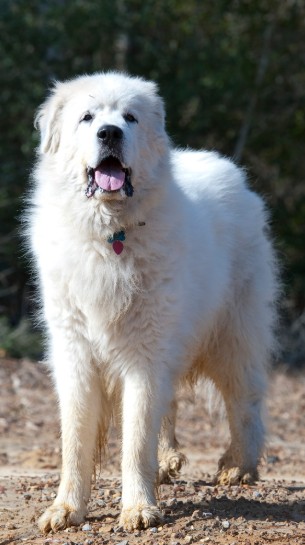
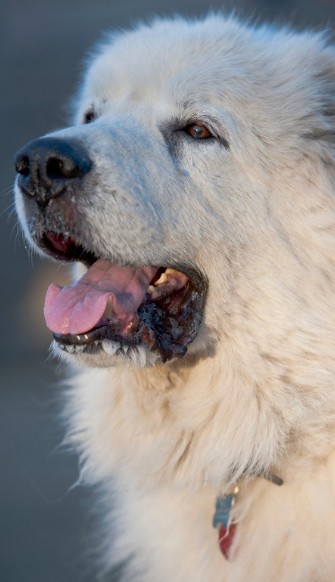
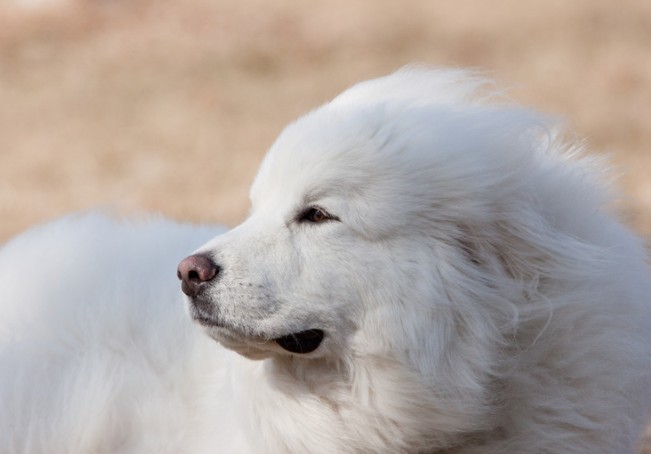
Independence is not defiance.
This breed weighs your requests against instinct and purpose. Commands become choices, and training becomes dialogue. The Pyrenees doesn’t ignore you—it evaluates you. And when it answers, it does so with dignity, not submission.
Performance & Activities
Enriching Your Guardian’s Life
While Great Pyrenees may appear content lounging on the porch, their intelligent minds and capable bodies benefit from appropriate activities. The key lies in choosing pursuits that honor their nature while providing necessary stimulation.
Mental Enrichment: Feeding the Guardian Mind
Mental stimulation often matters more than physical exercise for this breed. Their problem-solving abilities, honed through centuries of independent decision-making, require regular engagement to prevent boredom-related behaviors.
Enrichment activities that engage the Pyrenees mind:
- Scent work: Hide treats or toys for independent discovery
- Puzzle feeders: Slow feeding while engaging problem-solving
- Territory games: “Find it” games throughout their space
- Observation posts: Rotating access to different viewing areas
- Novel experiences: New walking routes or controlled explorations
These activities satisfy their need for mental engagement while respecting their preference for independent work over repetitive obedience drills.
Physical Exercise: Quality Over Quantity
Despite their size, Great Pyrenees don’t require excessive physical exercise. Their energy expenditure patterns reflect their working heritage—periods of vigilant rest punctuated by necessary action.
Appropriate exercise includes:
- Daily walks at their preferred pace (usually leisurely)
- Free exploration in secure areas
- Swimming for joint-friendly exercise
- Cart pulling or light draft work
- Hiking on varied terrain
Avoid high-impact activities during growth phases, as rapid development makes joints vulnerable. Adult Pyrenees benefit more from consistent, moderate exercise than intensive workout sessions.
Working Roles: Modern Applications of Ancient Skills
Many Great Pyrenees thrive when given “jobs” that utilize their natural abilities. These roles provide purpose and mental satisfaction beyond basic companionship.
Modern working opportunities:
- Therapy work: Their calm presence suits hospital or nursing home visits
- Property guardian: Supervised protection of home and family
- Livestock guardian: Traditional role on farms or ranches
- Wildlife deterrent: Protecting gardens from deer and other animals
- Child companion: Gentle supervision of family children
Even symbolic jobs, like “guarding” a specific room or being “in charge” of alerting to deliveries, can provide meaningful purpose for these working dogs.
Nutritional Recommendations
Fueling Your Gentle Giant
Proper nutrition forms the foundation of health for Great Pyrenees. Their unique metabolism, size considerations, and breed-specific health concerns all influence optimal feeding strategies.
Metabolic Considerations: The Efficient Processor
Great Pyrenees possess surprisingly efficient metabolisms for their size. This adaptation, developed in resource-scarce mountain environments, means they typically require less food than similarly-sized breeds with higher activity levels.
Understanding metabolic needs:
- Caloric requirements vary by activity level (1,500-2,500 calories daily)
- Working dogs need 25-50% more calories than house pets
- Metabolism slows significantly with age
- Seasonal variations affect appetite and needs
- Individual variation requires careful monitoring
Overfeeding leads quickly to obesity, stressing joints and exacerbating breed health issues. Monitor body condition regularly, adjusting portions based on visible waist and rib coverage rather than rigid feeding guidelines.
Growth Nutrition: Building Strong Foundations
Proper nutrition during growth phases critically impacts adult health. Large breed puppies like Great Pyrenees require carefully balanced nutrition to support steady, controlled growth rather than rapid development.
Critical growth nutrition factors:
- Calcium-phosphorus balance: Maintain 1.2:1 ratio for proper bone development
- Controlled protein levels: 22-26% supports growth without acceleration
- Large breed puppy formulas: Specifically designed for slow, steady growth
- Portion control: Multiple small meals prevent bloat risk
- Growth monitoring: Weekly weigh-ins track appropriate development
Avoid supplementing calcium or other minerals without veterinary guidance, as excess can cause developmental orthopedic diseases. Trust quality commercial diets formulated for large breed puppies or work with veterinary nutritionists for homemade options.

Bloat Prevention: A Life-Saving Priority
Gastric dilatation-volvulus (GDV or bloat) represents a significant risk for deep-chested breeds like Great Pyrenees. Nutritional management plays a crucial role in prevention strategies.
Feeding strategies for bloat prevention:
- Feed 2-3 smaller meals rather than one large meal
- Use slow-feeder bowls or puzzle feeders
- Avoid elevated feeding stations (contrary to old advice)
- Restrict activity 1 hour before and after meals
- Monitor for food-related anxiety or competitive eating
- Consider prophylactic gastropexy for high-risk dogs
Understanding individual risk factors helps tailor prevention strategies. Dogs with anxious temperaments, food-gulping behaviors, or family histories of bloat require extra vigilance.
Special Dietary Needs: Addressing Breed-Specific Concerns
Many Great Pyrenees benefit from targeted nutritional support addressing breed-specific health tendencies. These additions should complement, not replace, balanced base nutrition.
Beneficial nutritional supplements:
- Joint support: Glucosamine, chondroitin, and MSM for hip/elbow health
- Omega fatty acids: EPA and DHA for coat health and inflammation
- Probiotics: Supporting digestive health and immune function
- Antioxidants: Vitamins E and C for cellular health
- Adaptogens: Herbs supporting stress management (with veterinary approval)
Always introduce supplements gradually and monitor for reactions. Natural doesn’t always mean safe, and interactions with medications require consideration.
Health Concerns: Proactive Wellness Management
Understanding breed-specific health predispositions empowers proactive care decisions. While Great Pyrenees generally enjoy robust health, certain conditions appear more frequently in the breed.
Orthopedic Challenges: Protecting Joint Health
Large breed structure predisposes Great Pyrenees to various orthopedic conditions. Early detection and management significantly impact quality of life.
Common orthopedic concerns include:
Hip Dysplasia: Malformation of hip joints affects significant percentage of the breed
- Genetic and environmental factors contribute
- Early signs include bunny-hopping, difficulty rising
- Management ranges from conservative to surgical
- Weight management critically important
Elbow Dysplasia: Less common but equally impactful
- Often appears during rapid growth phases
- Causes front limb lameness
- Requires imaging for diagnosis
- Early intervention improves outcomes
Panosteitis: “Growing pains” affecting long bones
- Self-limiting but painful condition
- Shifting lameness characteristic
- Supportive care usually sufficient
- Typically resolves by 18-24 months
Cruciate Ligament Injuries: Common in middle-aged dogs
- Sudden lameness after activity
- Requires surgical intervention
- Rehabilitation crucial for recovery
- Weight management prevents recurrence
Regular veterinary screenings, appropriate exercise, and weight management form the cornerstone of orthopedic health maintenance.
Endocrine Imbalances: The Hidden Challenges
Great Pyrenees show increased susceptibility to certain endocrine disorders requiring lifelong management but offering excellent prognosis with proper treatment.
Addison’s Disease (Hypoadrenocorticism): This autoimmune condition affects adrenal gland function, disrupting crucial hormone production. While serious, proper diagnosis and treatment ensure normal life expectancy.
Signs to monitor:
- Episodic weakness or collapse
- Vomiting and diarrhea
- Increased thirst and urination
- Depression or lethargy
- Poor appetite
Treatment involves hormone replacement therapy, with most dogs responding excellently to medication. Regular monitoring ensures optimal dosing throughout life stages.
Hypothyroidism: Decreased thyroid hormone production affects metabolism and multiple body systems. Great Pyrenees may show subtle initial signs easily mistaken for normal aging.
Watch for:
- Weight gain despite normal appetite
- Coat changes (dullness, excessive shedding)
- Lethargy or mental dullness
- Cold intolerance
- Skin problems
Simple blood tests diagnose thyroid issues, and inexpensive daily medication restores normal function. Regular monitoring adjusts dosing as needed.
Cancer Concerns: Vigilance in Senior Years
Like many large breeds, Great Pyrenees face increased cancer risk with advancing age. Early detection dramatically improves treatment options and outcomes.
Common cancers in the breed:
- Osteosarcoma: Bone cancer typically affecting limbs
- Hemangiosarcoma: Aggressive cancer of blood vessels
- Lymphoma: Cancer of lymphatic system
- Mammary tumors: Especially in unspayed females
- Soft tissue sarcomas: Various locations possible
Regular veterinary examinations, owner vigilance for lumps or behavior changes, and prompt investigation of concerns support early detection. Many cancers respond well to treatment when caught early.
Aging Gracefully: Senior Pyrenees Care
Great Pyrenees typically enjoy 10-12 year lifespans, with many living comfortably into their teens with proper care. Senior years bring unique considerations for maintaining quality of life.
Senior care priorities:
- Pain management: Arthritis affects most senior large breeds
- Cognitive support: Mental enrichment prevents decline
- Mobility assistance: Ramps, orthopedic bedding, traction aids
- Dietary adjustments: Senior formulas support changing needs
- Increased veterinary monitoring: Bi-annual check-ups catch issues early
The stoic Pyrenees nature means they often hide discomfort. Watch for subtle changes like reluctance to patrol, increased sleep, or behavior changes that might indicate pain or illness.
Lifestyle & Environment: Creating the Perfect Pyrenees Home
Successful Great Pyrenees ownership requires environmental considerations beyond basic dog-proofing. These dogs thrive in settings that honor their working heritage while accommodating modern life realities.
Space Requirements: Room to Roam
While adaptable, Great Pyrenees flourish with adequate space for their guardian behaviors. This doesn’t necessarily mean acres of land, but rather thoughtfully designed environments supporting their needs.
Ideal spatial elements include:
- Secure perimeter fencing: 6-foot minimum height with dig guards
- Multiple vantage points: Elevated areas for surveying territory
- Shelter options: Access to shade and weather protection
- Defined territories: Clear boundaries they can patrol
- Indoor observation posts: Windows overlooking approach routes
Urban Pyrenees can thrive with creative solutions like scheduled park visits, structured walks covering territory, and indoor enrichment replacing outdoor patrol opportunities.
Climate Considerations: Working With the Weather
The Great Pyrenees’ magnificent double coat provides remarkable climate adaptation, but modern living requires seasonal management strategies.
Summer management priorities:
- Never shave the coat—it provides cooling insulation
- Provide constant fresh water access
- Schedule activities during cooler hours
- Monitor for heat stress signs
- Consider cooling mats or kiddie pools
- Ensure adequate shade in outdoor spaces
Winter considerations:
- Most Pyrenees prefer cold weather
- Monitor for ice balls between toes
- Provide unfrozen water sources
- Check for hidden injuries under thick coat
- Allow choice between indoor and outdoor time
Their weather preferences often surprise owners—many Pyrenees choose to sleep outside during snowstorms while seeking air conditioning during summer heat.
Family Integration: Children and Other Pets
Great Pyrenees generally excel as family dogs, bringing their protective instincts to household members. However, their size and guardian nature require thoughtful management.
Children considerations:
- Supervise interactions with young children
- Teach children to respect dog’s space
- Monitor for resource guarding behaviors
- Establish clear boundaries for both species
- Recognize herding/protective behaviors
Many Pyrenees develop especially strong bonds with “their” children, following them devotedly and positioning themselves between kids and perceived threats. This protection, while touching, requires guidance to prevent overprotectiveness.
Multi-pet households: Great Pyrenees typically accept animals they’re raised with as part of their flock. Introduction strategies matter significantly for household harmony.
- Gradual introductions in neutral territory
- Respect existing pet hierarchies
- Monitor resource competition
- Provide separate feeding areas initially
- Watch for protective behaviors around other pets
Their livestock guardian heritage means most Pyrenees readily accept various species as family members, from cats to chickens, when properly introduced.
Daily Routines: Structuring Success
Creating predictable routines helps Great Pyrenees balance their guardian duties with family life. Structure provides security while allowing flexibility for their independent nature.
Sample daily structure:
- Morning: Patrol walk, breakfast, observation time
- Midday: Rest period, possible enrichment activity
- Evening: Family time, dinner, territory check
- Night: Final patrol, settling routine, vigilance period
Flexibility within structure matters—forcing rigid schedules frustrates independent dogs. Instead, create frameworks supporting natural behavior patterns while meeting household needs.
Senior Years: Honoring the Aging Guardian
As Great Pyrenees enter their golden years, their needs shift while their devotion remains constant. Understanding and accommodating these changes ensures comfortable, dignified aging.
Physical Changes: Adapting to New Realities
Age brings inevitable physical changes requiring environmental and routine modifications. Early recognition and proactive management maintain quality of life.
Common age-related changes:
- Decreased mobility from arthritis
- Reduced stamina for patrols
- Sensory changes (hearing, vision)
- Slower metabolism
- Temperature regulation difficulties
Adaptations might include ramps for car access, orthopedic bedding, night lights for vision support, and adjusted exercise routines honoring limitations while maintaining engagement.
Behavioral Shifts: The Mellowing Guardian
Senior Pyrenees often show behavioral changes reflecting both physical limitations and emotional maturity. These shifts require understanding rather than correction.
Typical behavioral evolution:
- Increased affection and proximity-seeking
- Selective hearing (both physical and convenient)
- Reduced tolerance for disruption
- Modified guardian behaviors
- Deeper sleep patterns
Some seniors become more dependent, seeking constant companionship after years of independence. Others maintain stoic independence despite physical challenges. Both patterns deserve respect and accommodation.
Medical Management: Comprehensive Senior Care
Proactive medical management helps senior Pyrenees maintain comfort and function throughout their final years.
Senior healthcare priorities:
- Bi-annual veterinary examinations
- Blood work monitoring organ function
- Pain management protocols
- Dental health maintenance
- Weight management programs
- Mobility support options
Quality of life assessments help guide difficult decisions. The stoic Pyrenees nature means owners must advocate actively, watching for subtle discomfort signs their dog might hide.
The Final Journey: Saying Goodbye
When quality of life diminishes beyond medical management’s reach, Great Pyrenees owners face heartbreaking decisions. Their deep bonds make these choices particularly difficult.
Consider:
- Quality versus quantity of time
- Your dog’s individual values and joys
- Burden of treatments versus benefits
- Natural decline versus intervention
- Home euthanasia options for familiar surroundings
Many Pyrenees seem to communicate readiness through subtle signs—a final patrol, unusual affection, or peaceful resignation. Trusting your knowledge of your individual dog guides compassionate decisions.
Is a Great Pyrenees Right for You?
After exploring the complexities and joys of Great Pyrenees ownership, the ultimate question remains deeply personal. These magnificent dogs offer unparalleled loyalty, gentle protection, and independent companionship—but they’re not for everyone.
You might thrive with a Great Pyrenees if you:
- Value independent thinking over blind obedience
- Appreciate subtle affection over exuberant displays
- Can provide secure, adequate space
- Understand and respect guardian behaviors
- Commit to grooming and health management
- Enjoy the journey of understanding complex communication
- Seek a thoughtful, devoted companion
Consider other breeds if you:
- Require immediate, consistent obedience
- Need a highly active exercise companion
- Cannot accommodate nocturnal activity
- Lack secure fencing or space
- Want minimal grooming requirements
- Prefer dogs who live to please
- Need predictable, eager compliance
Conclusion: Embracing the Guardian’s Gift
The Great Pyrenees offers a unique relationship unlike any other breed. Their combination of independence and devotion, protection and gentleness, creates bonds that transform both dog and human. Understanding their nature—working with rather than against their instincts—unlocks the profound gift of partnership with these ancient guardians.
Whether watching them patrol moonlit yards or feeling their gentle paw upon your knee during difficult times, Great Pyrenees owners discover that living with a guardian means being truly guarded—not just from physical threats, but wrapped in the constant, quiet devotion of a dog who chooses to love you.
The journey requires patience, understanding, and respect for their autonomous nature. But for those who embrace the challenge, the reward is a relationship of remarkable depth—a true partnership with one of dogdom’s most noble breeds. In return for understanding their independent spirit, you receive unwavering loyalty, gentle protection, and the profound privilege of sharing life with a Great Pyrenees. 🧡
As you consider welcoming a Great Pyrenees into your life, remember that you’re not just adopting a pet—you’re accepting a guardian, a thinking partner, and a gentle giant who will transform your understanding of the human-canine bond. The question isn’t whether you can train a Great Pyrenees, but whether you’re ready to learn from one. 🐾

